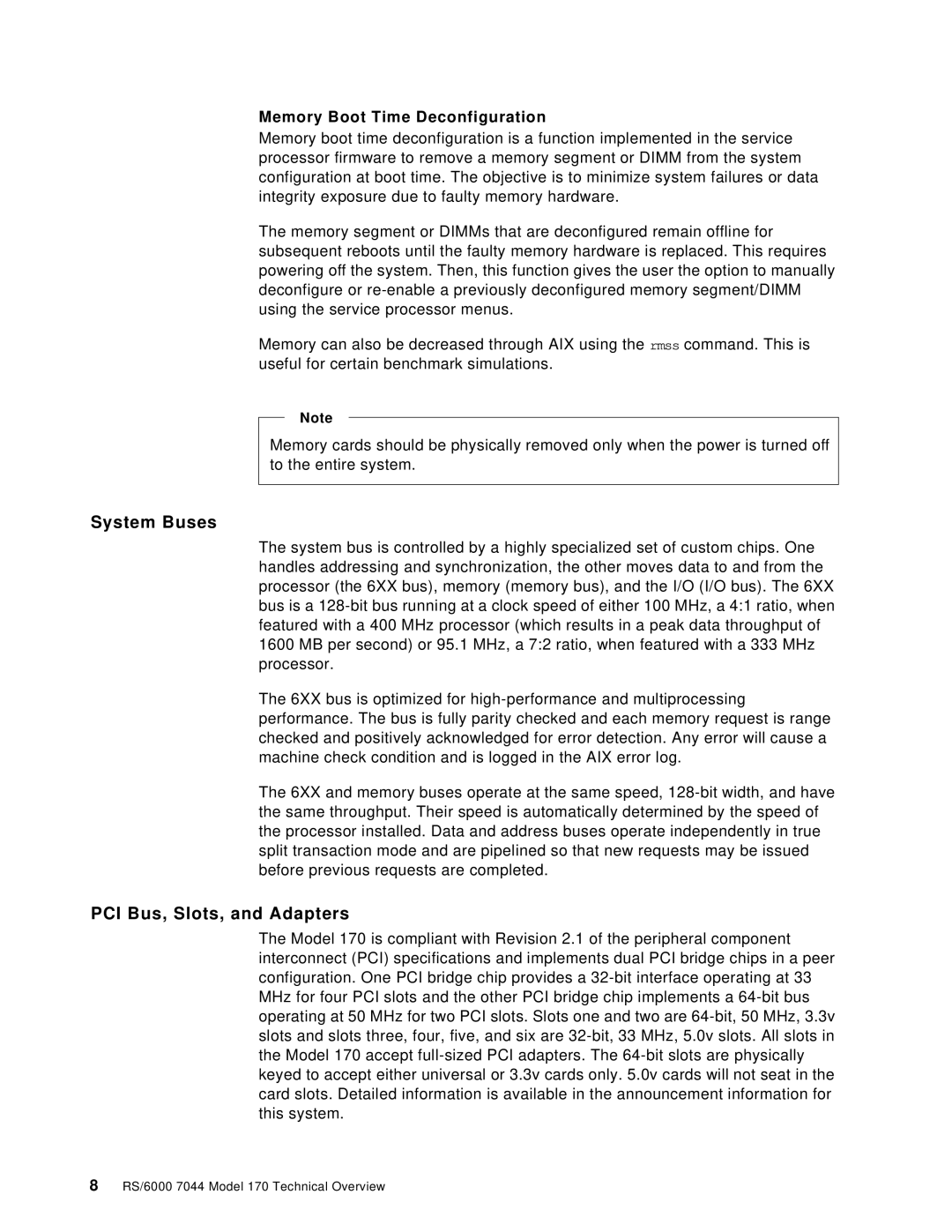Memory Boot Time Deconfiguration
Memory boot time deconfiguration is a function implemented in the service processor firmware to remove a memory segment or DIMM from the system configuration at boot time. The objective is to minimize system failures or data integrity exposure due to faulty memory hardware.
The memory segment or DIMMs that are deconfigured remain offline for subsequent reboots until the faulty memory hardware is replaced. This requires powering off the system. Then, this function gives the user the option to manually deconfigure or re-enable a previously deconfigured memory segment/DIMM using the service processor menus.
Memory can also be decreased through AIX using the rmss command. This is useful for certain benchmark simulations.
Note
Memory cards should be physically removed only when the power is turned off to the entire system.
System Buses
The system bus is controlled by a highly specialized set of custom chips. One handles addressing and synchronization, the other moves data to and from the processor (the 6XX bus), memory (memory bus), and the I/O (I/O bus). The 6XX bus is a 128-bit bus running at a clock speed of either 100 MHz, a 4:1 ratio, when featured with a 400 MHz processor (which results in a peak data throughput of 1600 MB per second) or 95.1 MHz, a 7:2 ratio, when featured with a 333 MHz processor.
The 6XX bus is optimized for high-performance and multiprocessing performance. The bus is fully parity checked and each memory request is range checked and positively acknowledged for error detection. Any error will cause a machine check condition and is logged in the AIX error log.
The 6XX and memory buses operate at the same speed, 128-bit width, and have the same throughput. Their speed is automatically determined by the speed of the processor installed. Data and address buses operate independently in true split transaction mode and are pipelined so that new requests may be issued before previous requests are completed.
PCI Bus, Slots, and Adapters
The Model 170 is compliant with Revision 2.1 of the peripheral component interconnect (PCI) specifications and implements dual PCI bridge chips in a peer configuration. One PCI bridge chip provides a 32-bit interface operating at 33 MHz for four PCI slots and the other PCI bridge chip implements a 64-bit bus operating at 50 MHz for two PCI slots. Slots one and two are 64-bit, 50 MHz, 3.3v slots and slots three, four, five, and six are 32-bit, 33 MHz, 5.0v slots. All slots in the Model 170 accept full-sized PCI adapters. The 64-bit slots are physically keyed to accept either universal or 3.3v cards only. 5.0v cards will not seat in the card slots. Detailed information is available in the announcement information for this system.

